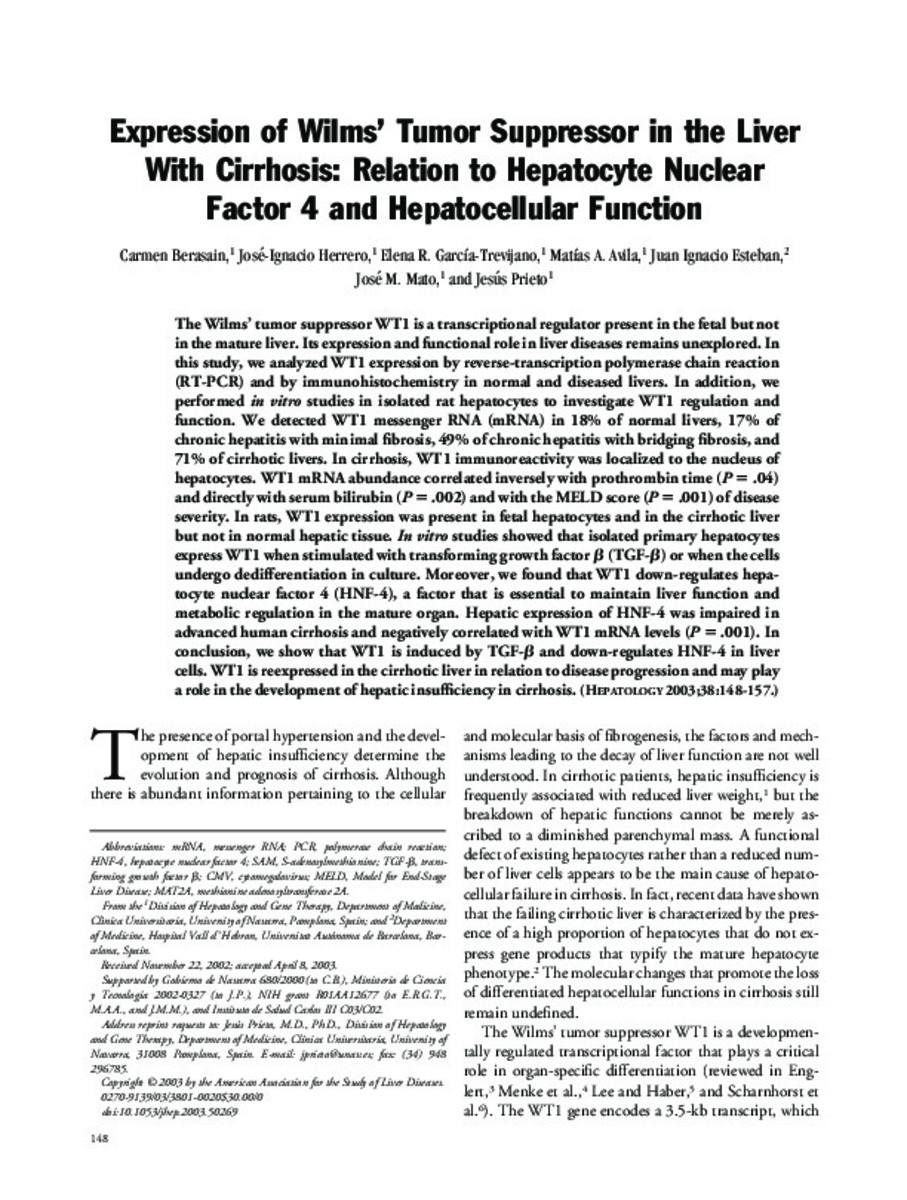Expression of Wilms' tumor suppressor in the liver with cirrhosis: relation to hepatocyte nuclear factor 4 and hepatocellular function
Keywords:
DNA-Binding Proteins
Hepatocytes/physiology
Liver Cirrhosis/physiopathology
Phosphoproteins/genetics
Transcription Factors/genetics
WT1 Proteins/genetics
Publisher:
Wiley-Blackwell
Citation:
Berasain C, Herrero JI, Garcia-Trevijano ER, Avila MA, Esteban JI, Mato JM, et al. Expression of Wilms' tumor suppressor in the liver with cirrhosis: relation to hepatocyte nuclear factor 4 and hepatocellular function. Hepatology 2003 Jul;38(1):148-157.
Statistics and impact
0 citas en

0 citas en

Items in Dadun are protected by copyright, with all rights reserved, unless otherwise indicated.








